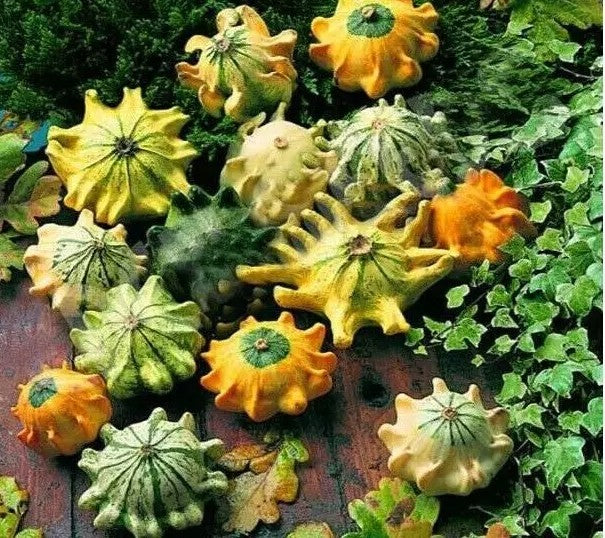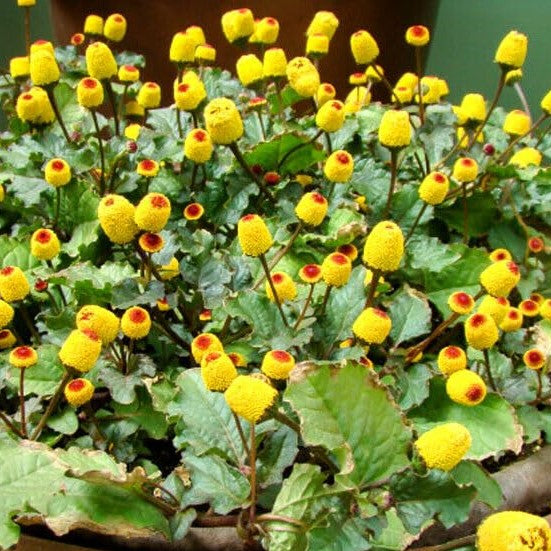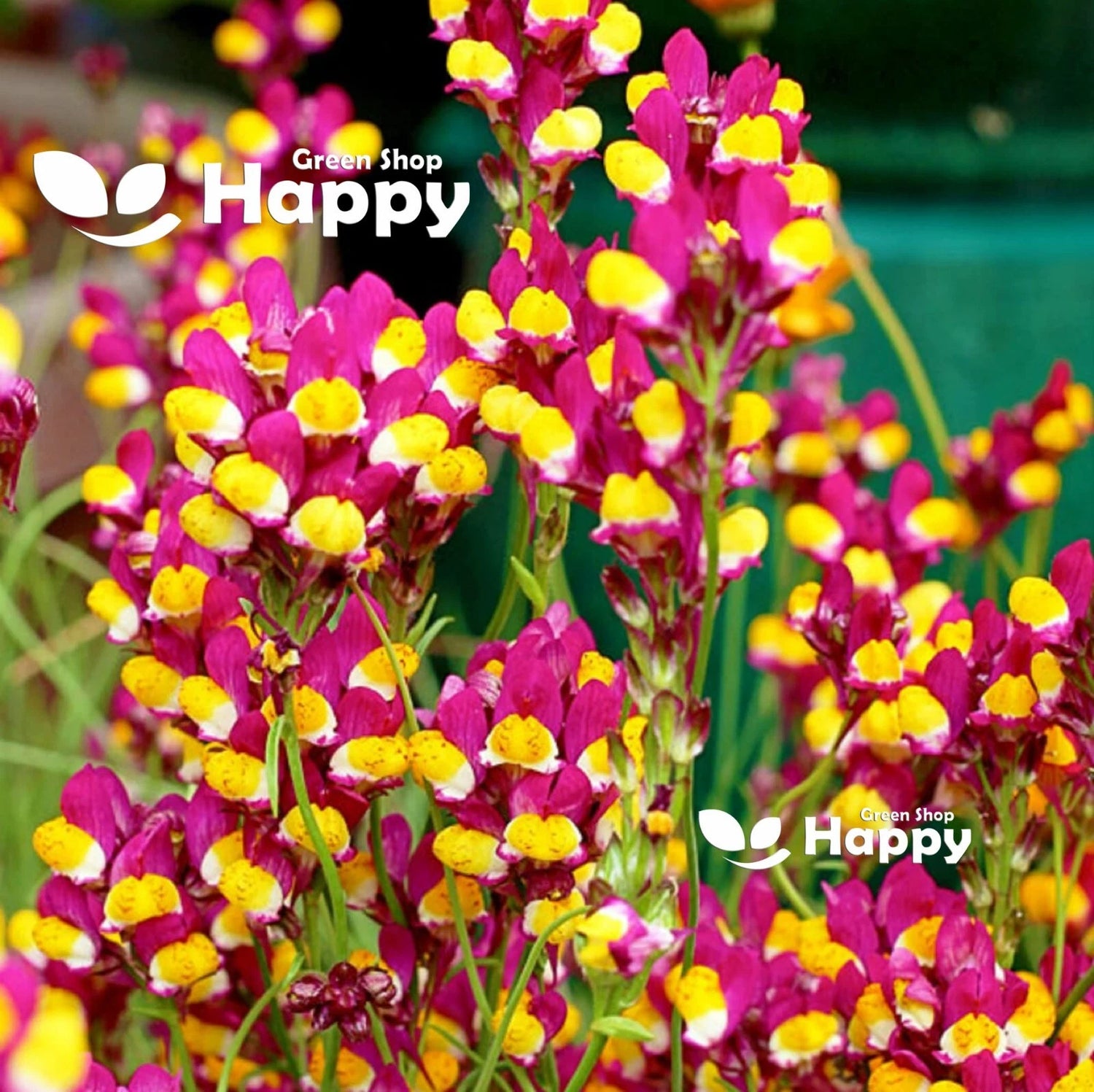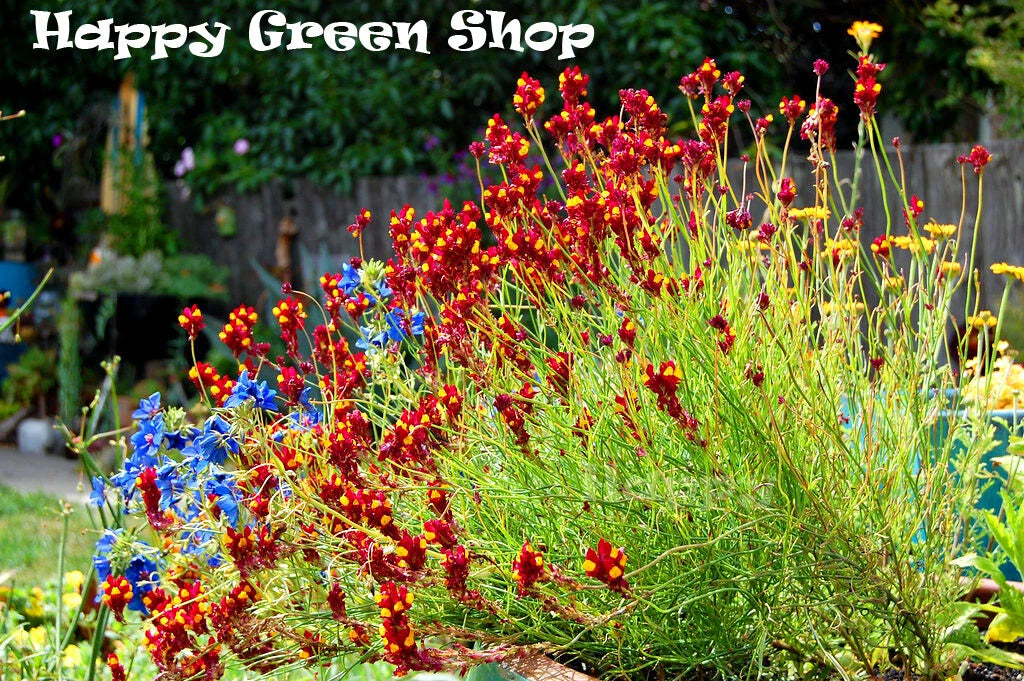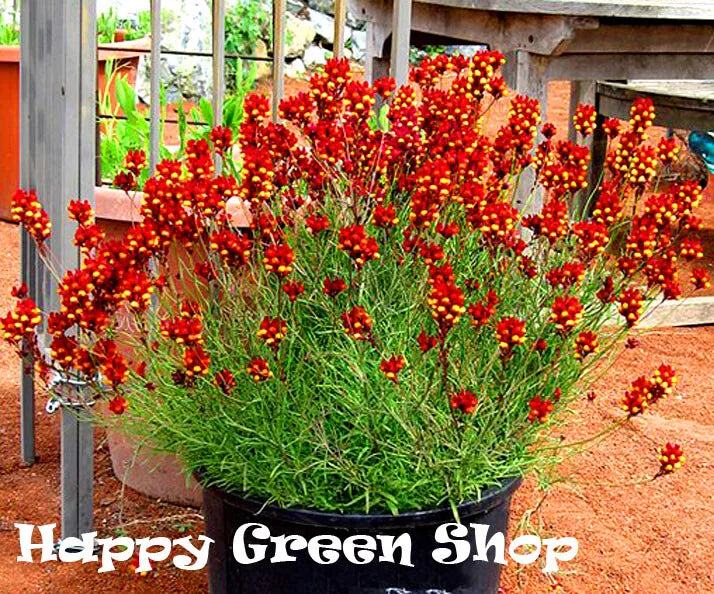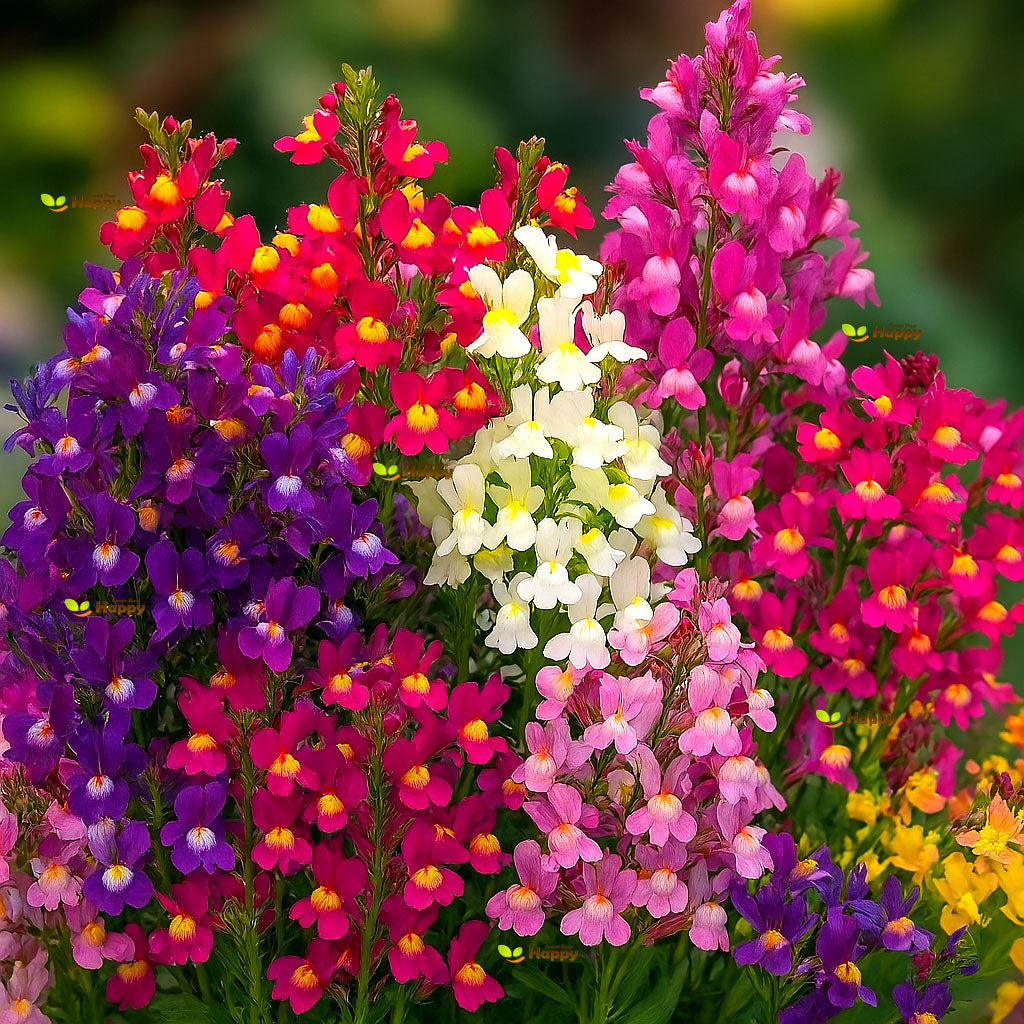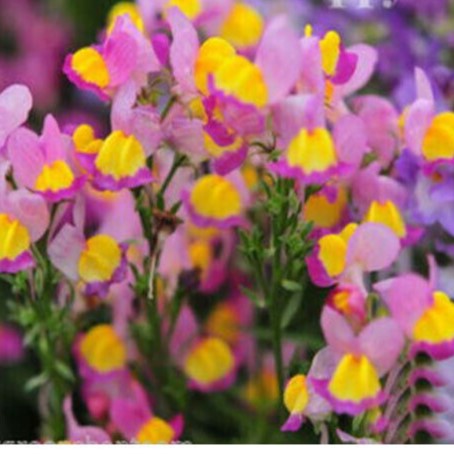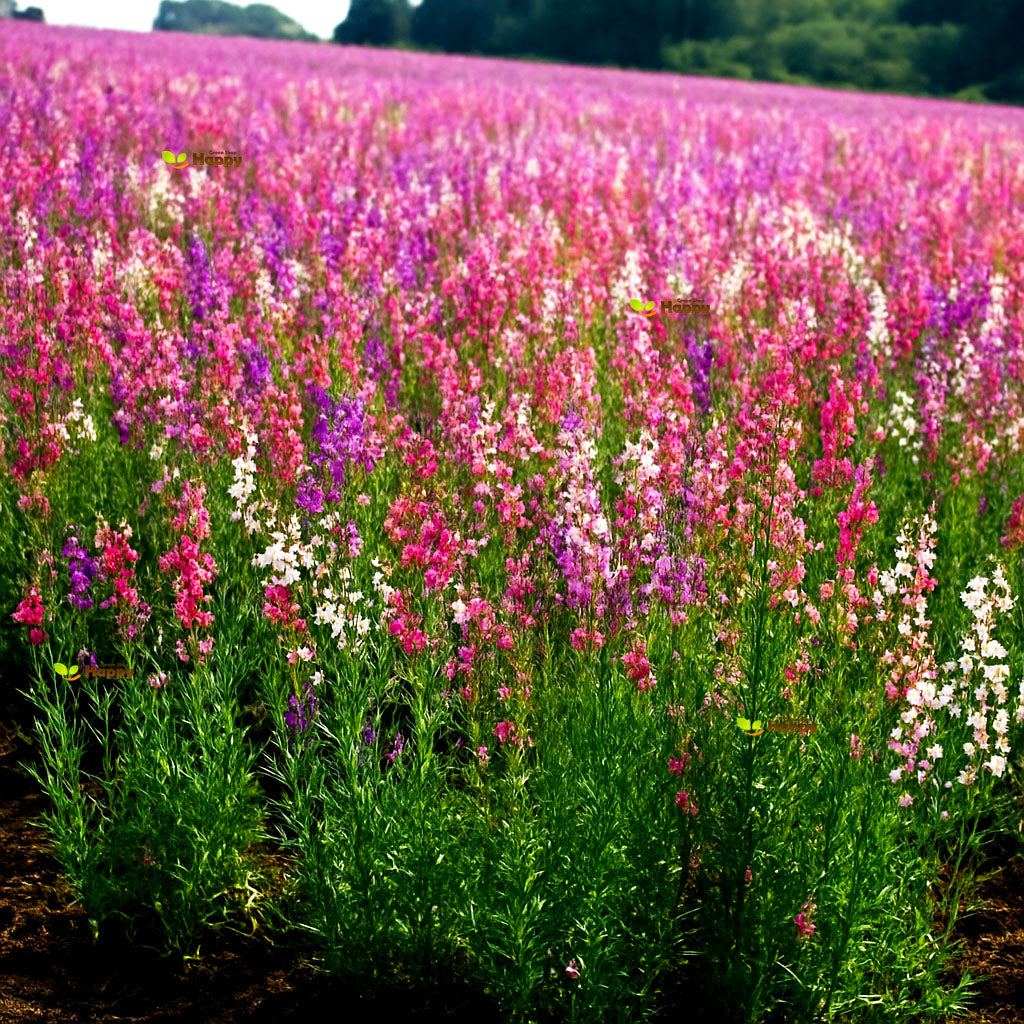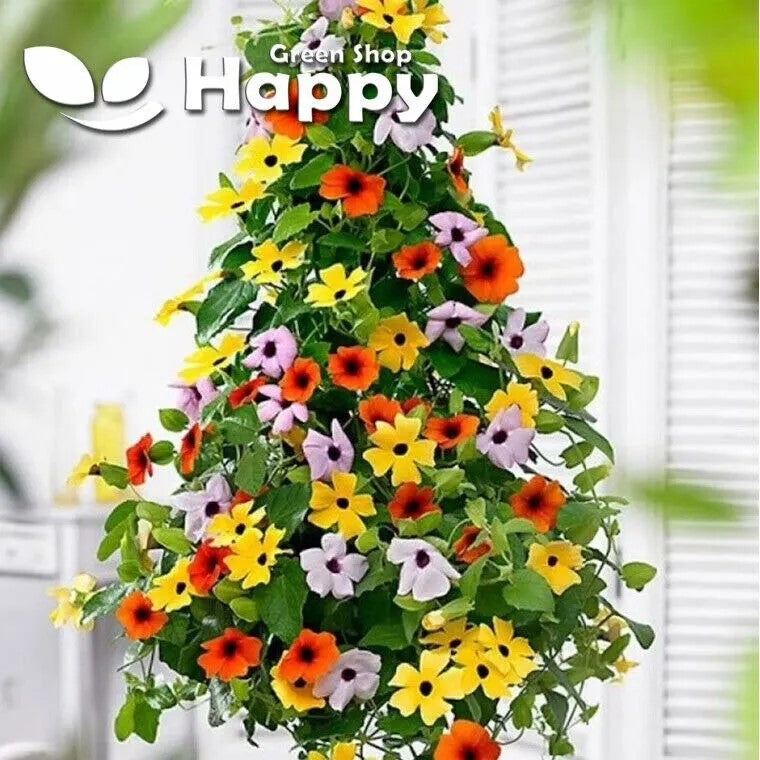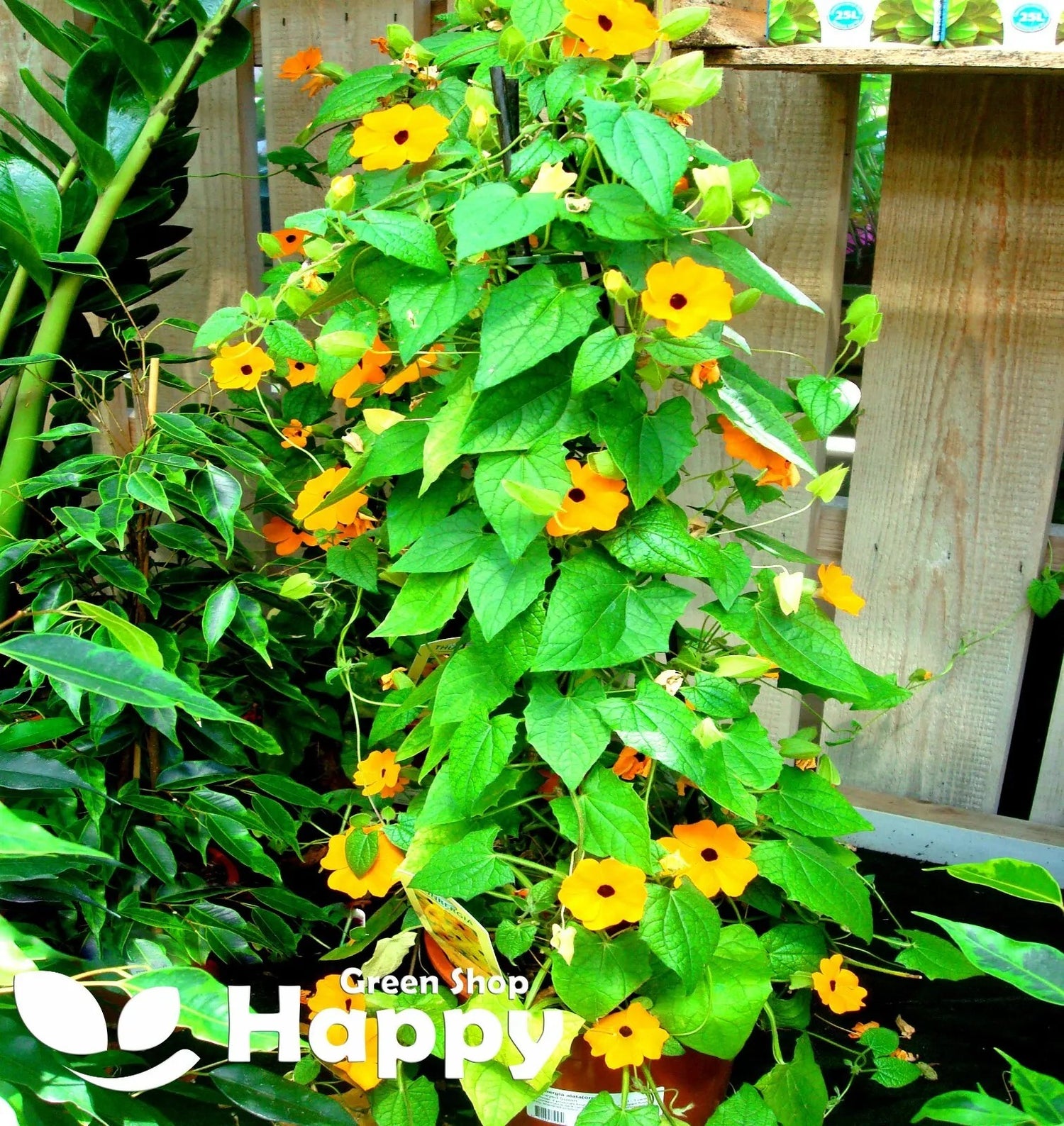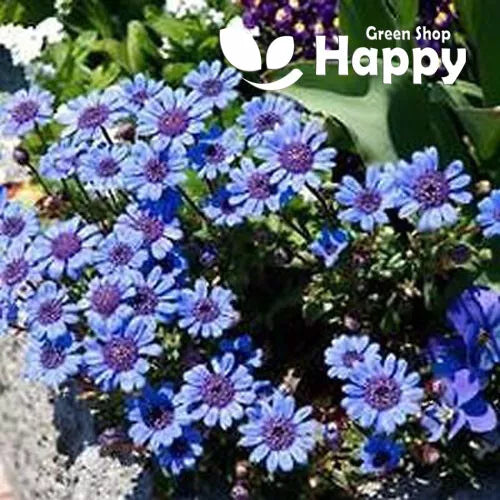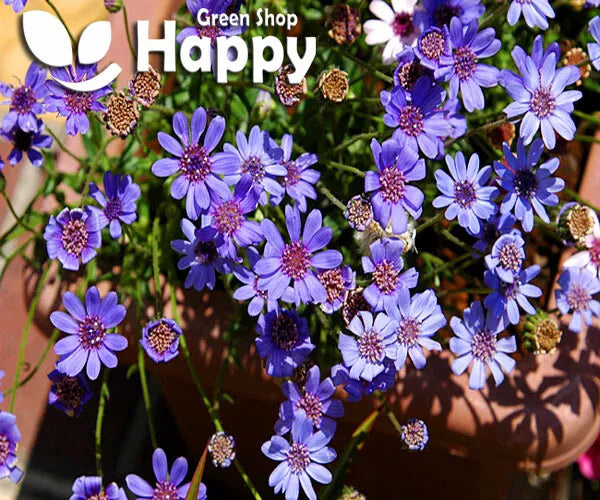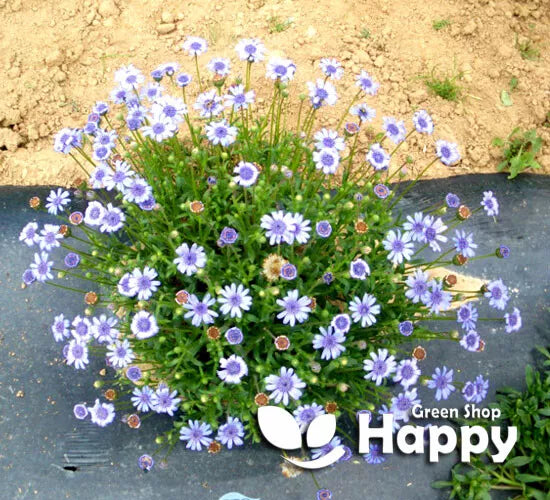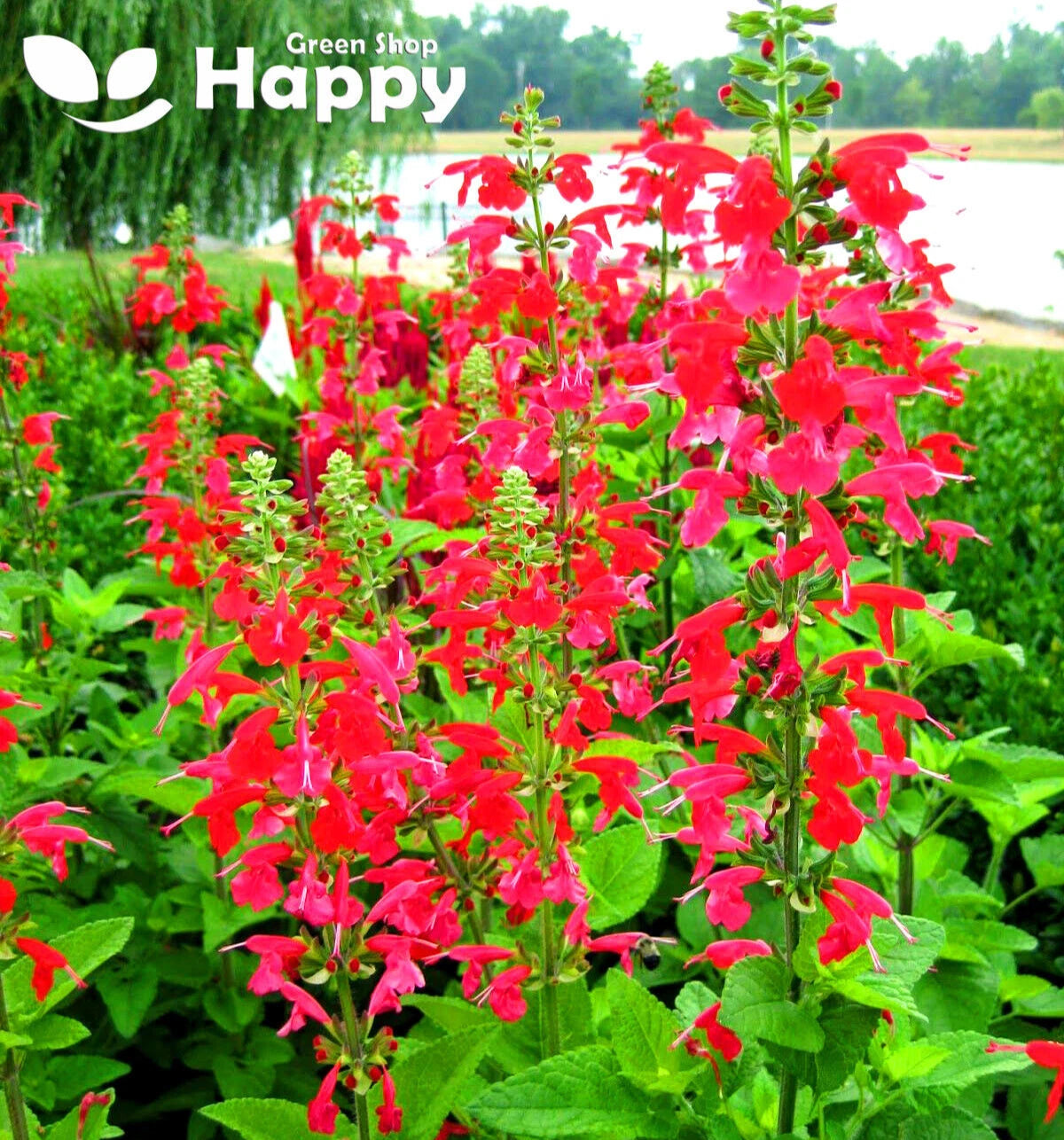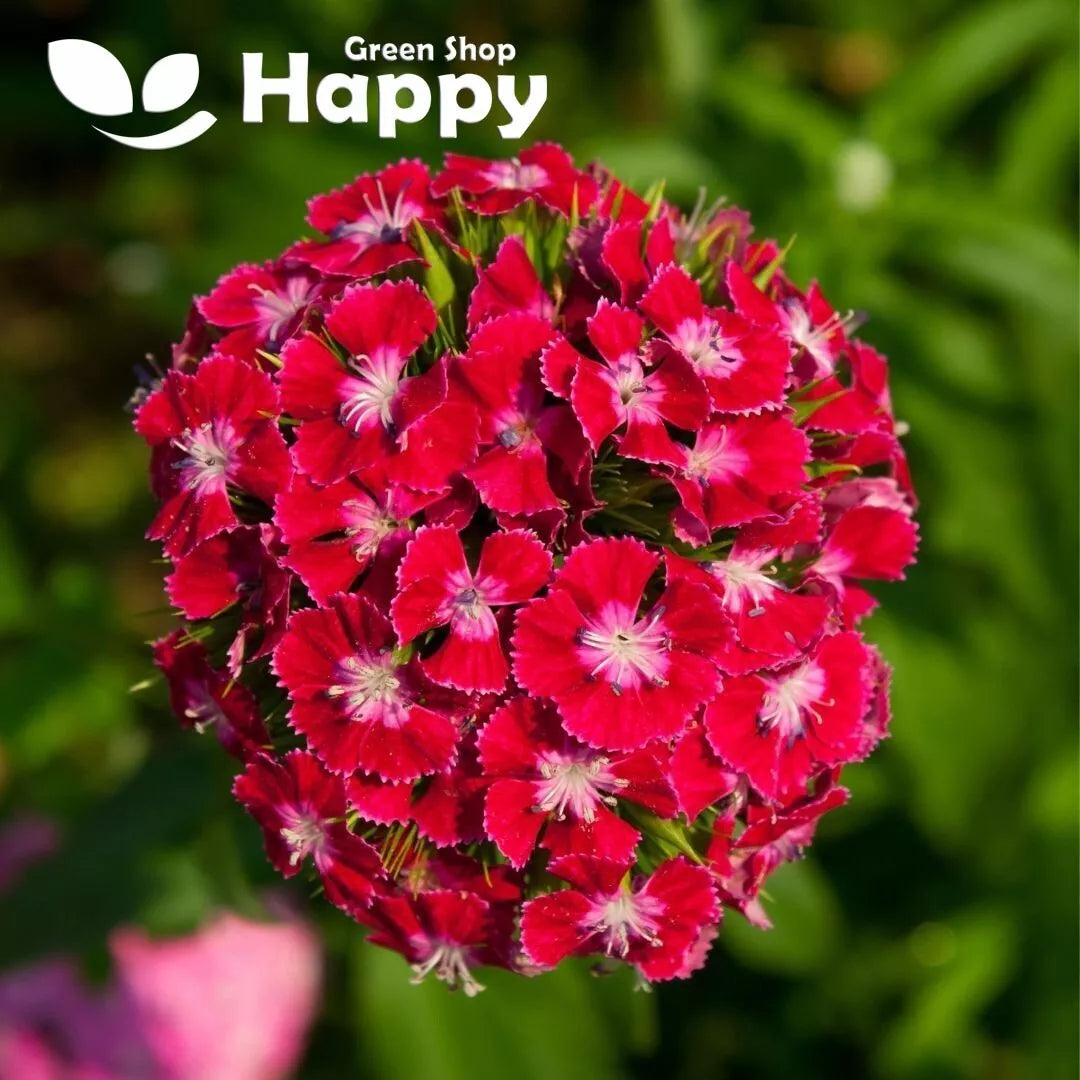Sort by:
435 products
435 products
Torenia 'Wishbone Flower' Mix Seeds (Torenia fournieri F2 Hybrids)
Torenia ‘Wishbone Flower’ is a charming, low-growing annual producing an abundance of vibrant trumpet-shaped blooms in shades of blue, purple, pink, and white. Its compact, trailing habit makes it perfect for hanging baskets, containers, and garden borders. With a long flowering season and easy care, it adds cheerful color to summer gardens.
What Makes It Special
-
Abundant, colorful trumpet-shaped blooms in blue, purple, pink, and white
-
Compact, trailing growth ideal for baskets, containers, and borders
-
Long-flowering and low-maintenance
-
Attracts pollinators such as bees and butterflies
Key Features
-
Botanical name: Torenia fournieri
-
Variety: F2 Hybrid Mix
-
Seed count: Approx. seeds per pack
-
Height/Spread: 15–25 cm tall, 25–35 cm spread
-
Position: Partial shade; fertile, well-drained soil
-
Flowering period: June–October
Ideal For
-
Hanging baskets and containers
-
Borders and edging
-
Mixed plantings in shaded areas
-
Pollinator-friendly gardens
Sowing Instructions
-
When to sow: February–April indoors; March–May outdoors after frost
-
How to sow:
-
Sow seeds thinly on the surface of moist seed compost and press lightly (do not cover)
-
Germination occurs in 10–14 days at 20–22°C
-
-
Transplanting: Harden off seedlings and plant outdoors 20–25 cm apart after frost
-
Care: Keep soil moist; deadhead faded flowers to encourage continuous blooms
Toothache Plant ‘Bull’s Eye’ – Seeds
(Spilanthes acmella)
Toothache Plant ‘Bull’s Eye’ is a unique annual known for its small, bright yellow flower heads with a red center. Famous for its tingling, numbing effect on the mouth, it’s a fun and unusual addition to edible and medicinal gardens. Compact and easy to grow, it also attracts pollinators like bees and butterflies.
Why Grow Toothache Plant ‘Bull’s Eye’?
-
Bright yellow flowers with striking red centers
-
Unique tingling, numbing effect for culinary and medicinal use
-
Compact, easy-to-grow annual
-
Attracts bees and butterflies
Key Features
-
Type: Annual
-
Height: 25–40 cm
-
Flowers: Summer to autumn
-
Position: Full sun
-
Soil: Well-drained, fertile
Ideal For
-
Edible and medicinal gardens
-
Pollinator-friendly plantings
-
Containers and borders
-
Educational or novelty gardens
Sowing & Growing
-
Sow indoors: February–April in seed trays
-
Sow outdoors: April–May directly in prepared soil
-
Germination: 10–20 days at 20°C
-
Spacing: 20–25 cm apart
-
Care: Moderate watering; deadhead to encourage prolonged flowering
Toadflax - Baby Snapdragon 'Spanish Dancer' - 10 000 seeds (Linaria reticulata cordoba)
£1.15
Unit price perToadflax - Baby Snapdragon 'Spanish Dancer' - 10 000 seeds (Linaria reticulata cordoba)
£1.15
Unit price perToadflax ‘Spanish Dancer’ – Seeds
(Linaria reticulata ‘Cordoba’)
Toadflax ‘Spanish Dancer’ is a charming annual known for its delicate, snapdragon-like flowers in soft shades of pink and lavender. Compact and bushy, it creates a carpet of colorful blooms ideal for borders, rockeries, and containers. Long-flowering and low-maintenance, it’s perfect for adding a graceful, cottage-garden touch.
Why Grow Toadflax ‘Spanish Dancer’?
-
Delicate snapdragon-like blooms in pink and lavender
-
Compact, bushy, and long-flowering annual
-
Excellent for borders, rockeries, and containers
-
Attracts bees and butterflies
Key Features
-
Type: Annual
-
Height: 20–30 cm
-
Flowers: Late spring to summer
-
Position: Full sun
-
Soil: Well-drained, moderately fertile
Ideal For
-
Cottage garden borders and beds
-
Rockeries and containers
-
Pollinator-friendly gardens
-
Low-maintenance ornamental planting
Sowing & Growing
-
Sow indoors: February–April in seed trays
-
Sow outdoors: April–May directly in prepared soil
-
Germination: 10–21 days at 15–20°C
-
Thin seedlings to 15–20 cm apart
-
Care: Water moderately and deadhead to prolong flowering
Toadflax Baby Snapdragon Mix – Seeds (Linaria maroccana)
Toadflax Baby Snapdragon Mix is a charming, compact annual producing masses of small, colorful blooms reminiscent of miniature snapdragons. Flowering from late spring to early summer, it creates cheerful displays in borders, containers, and rockeries. Easy to grow and long-flowering, this variety attracts bees and butterflies, adding vibrant color and pollinator-friendly interest to your garden.
Why Grow "Baby Snapdragon Mix"
-
Compact plants with abundant small, colorful blooms
-
Long flowering season for continuous summer color
-
Attracts bees, butterflies, and other pollinators
-
Ideal for borders, containers, and rockeries
Key Features
-
Type: Annual (Linaria maroccana)
-
Height: 15–25 cm
-
Flowering: Late spring to early summer
-
Position: Full sun to partial shade
-
Uses: Borders, beds, containers, rockeries, pollinator gardens
Ideal For
-
Adding vibrant color to borders and beds
-
Patio and balcony container planting
-
Rockeries and low garden displays
-
Pollinator-friendly garden designs
Sowing & Growing
-
Sow indoors: Early spring, 6–8 weeks before last frost
-
Sow outdoors: Directly in soil after frost
-
Germination: 10–14 days
-
Space seedlings: 15–20 cm apart
-
Prefers well-drained soil and sunny locations
Thunbergia 'Sunrise' Mixed Seeds (Thunbergia alata)
Thunbergia 'Sunrise' is a vibrant climbing plant producing trumpet-shaped flowers in warm, sunrise-inspired colors. Its fast-growing vines and lush foliage make it perfect for trellises, fences, arches, and hanging baskets, adding tropical charm and color to any garden or patio.
What Makes It Special
-
Bright trumpet-shaped blooms in orange, yellow, and warm hues
-
Fast-growing climber with lush green foliage
-
Ideal for creating vertical displays and adding tropical flair
-
Perfect for containers, trellises, and pergolas
Key Features
-
Botanical name: Thunbergia alata
-
Common name: Thunbergia 'Sunrise' Mixed
-
Seed count: 35 seeds per pack
-
Height/Spread: 2–3 m tall, climbing habit
-
Position: Full sun to partial shade, well-drained soil
-
Flowering period: Summer to early autumn
-
Lifespan: Annual in temperate zones; perennial in frost-free areas
Ideal For
-
Trellises, fences, and arches
-
Hanging baskets and patio containers
-
Vertical gardens or pergolas
-
Adding bright, tropical color to any garden
Sowing Instructions
-
When to sow: March–May indoors or after last frost outdoors
-
How to sow:
-
Soak seeds for 12–24 hours before sowing to improve germination
-
Sow 0.5–1 cm deep in moist, well-drained soil
-
Keep soil warm and moist until seedlings appear (10–20 days)
-
-
Support: Provide trellis or climbing support as plants grow
-
Care: Regular watering and feeding encourage lush growth and abundant flowers
Thunbergia ‘Sunrise’ Orange – Seeds (Thunbergia alata)
Thunbergia ‘Sunrise’ Orange (Thunbergia alata) is a vigorous, fast-growing annual climber producing bright orange, trumpet-shaped flowers with dark centers throughout summer. Ideal for trellises, fences, pergolas, and hanging baskets, its cascading habit and long flowering season make it perfect for adding vibrant color and vertical interest to your garden. Easy to grow and low-maintenance, it also attracts pollinators such as bees and butterflies.
Why Grow "Sunrise Orange"
-
Bright orange, trumpet-shaped flowers with dark centers
-
Fast-growing, vigorous climber
-
Long flowering season from summer to autumn
-
Perfect for trellises, pergolas, and hanging baskets
Key Features
-
Type: Annual climber (Thunbergia alata)
-
Height: 150–200 cm
-
Flowering: Summer to autumn
-
Position: Full sun to partial shade
-
Uses: Trellises, fences, pergolas, hanging baskets, pollinator gardens
Ideal For
-
Adding vibrant color and vertical interest to gardens
-
Patio, balcony, and container planting
-
Pollinator-friendly garden designs
-
Gardeners seeking fast-growing, long-flowering climbers
Sowing & Growing
-
Sow indoors: 6–8 weeks before last frost
-
Sow outdoors: After frost danger has passed
-
Germination: 10–14 days
-
Space seedlings: 25–30 cm apart
-
Provide support for climbing and well-drained soil
The Blue Blues Daisy – Seeds (Felicia heterophylla)
The Blue Blues Daisy (Felicia heterophylla) is a charming, long-flowering perennial producing vibrant blue daisy-like blooms with yellow centers from summer to autumn. Its compact, bushy habit makes it perfect for borders, containers, and rockeries. Easy to grow and low-maintenance, this variety attracts bees and butterflies, adding continuous color and pollinator-friendly interest to your garden.
Why Grow "The Blue Blues Daisy"
-
Bright blue daisy-like flowers with yellow centers
-
Long flowering season from summer to autumn
-
Compact and bushy, ideal for borders and containers
-
Attracts bees, butterflies, and other pollinators
Key Features
-
Type: Perennial (Felicia heterophylla)
-
Height: 25–35 cm
-
Flowering: Summer to autumn
-
Position: Full sun to partial shade
-
Uses: Borders, containers, rockeries, pollinator gardens
Ideal For
-
Adding vibrant color to borders, beds, and containers
-
Rockery and patio planting
-
Pollinator-friendly garden designs
-
Gardeners seeking long-flowering, low-maintenance perennials
Sowing & Growing
-
Sow indoors: 6–8 weeks before last frost
-
Sow outdoors: After frost danger has passed
-
Germination: 10–14 days
-
Space seedlings: 20–25 cm apart
-
Prefers well-drained soil and sunny to partially shaded locations
Texas Scarlet Sage – Seeds (Salvia coccinea)
Texas Scarlet Sage is a vibrant, heat-tolerant annual producing spikes of brilliant scarlet-red tubular flowers that attract hummingbirds, bees, and butterflies. Blooming from summer into autumn, this easy-to-grow plant thrives in borders, containers, and pollinator gardens. Its compact, bushy habit and long flowering season make it a standout choice for adding bold color and wildlife interest to your garden.
Why Grow "Texas Scarlet Sage"
-
Brilliant scarlet-red tubular flowers
-
Long flowering season from summer to autumn
-
Attracts hummingbirds, bees, and butterflies
-
Heat-tolerant and easy to grow
Key Features
-
Type: Annual (Salvia coccinea)
-
Height: 50–70 cm
-
Flowering: Summer to autumn
-
Position: Full sun
-
Uses: Borders, containers, pollinator gardens, bedding displays
Ideal For
-
Adding bold red color to borders and beds
-
Patio and container planting
-
Pollinator-friendly garden designs
-
Gardeners seeking long-flowering, easy-care plants
Sowing & Growing
-
Sow indoors: 6–8 weeks before last frost
-
Sow outdoors: After frost danger has passed
-
Germination: 10–14 days
-
Space seedlings: 30 cm apart
-
Prefers well-drained soil and full sun
Sweet William Scarlet Seeds (Dianthus barbatus Red)
Sweet William Scarlet is a vibrant biennial flower renowned for its rich, scarlet-red flower clusters. With upright growth and densely packed blooms, it is perfect for borders, cottage gardens, and cut flower arrangements. This hardy biennial adds striking color and charm to any garden space.
What Makes It Special
-
Produces vivid scarlet-red flower clusters
-
Compact, upright growth ideal for borders and mixed beds
-
Excellent for cut flowers with long-lasting blooms
-
Biennial: reliable flowering in the second year
Key Features
-
Botanical name: Dianthus barbatus
-
Common name: Sweet William Scarlet
-
Seed count: Approx. seeds per pack
-
Height/Spread: 30–50 cm tall, 20–30 cm spread
-
Position: Full sun to partial shade, well-drained soil
-
Flowering period: Second year; late spring to early summer
-
Lifespan: Biennial
Ideal For
-
Borders, cottage-style gardens, and mixed flower beds
-
Cut flower arrangements
-
Pollinator-friendly gardens
-
Containers and patio planting
Sowing Instructions
-
When to sow:
-
Indoors: February–April for transplanting
-
Outdoors: April–May in well-prepared soil
-
-
How to sow:
-
Sow seeds thinly on the surface and press lightly into soil
-
Keep soil moist until germination (10–20 days)
-
-
Transplant/Thin: Space seedlings 20–30 cm apart
-
Care: Protect young plants from frost; deadhead spent flowers to prolong bloom
Showing 36/435




